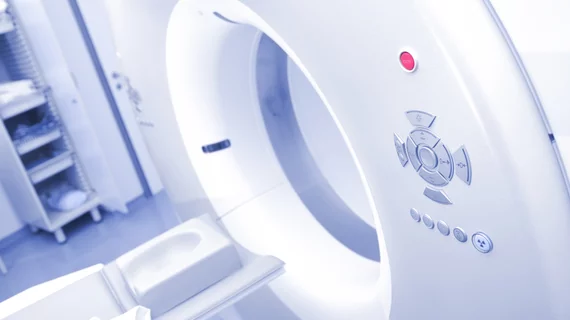Background parenchymal enhancement leads to abnormal breast MRI interpretations
High levels of background parenchymal enhancement (BPE) can have a negative impact on the diagnostic quality of breast MRI interpretations, according to new findings published in Academic Radiology.
“Because of the negative impact of breast density on the sensitivity and specificity of mammography, radiologists are required to document breast density in mammography reports and many states have enacted legislation requiring this information be shared directly with patients,” wrote Dorothy A. Sippo, MD, MPH, department of radiology at Massachusetts General Hospital in Boston, and colleagues. “If BPE has a similar impact on MRI performance, then comparable attention to its importance may be warranted.”
The authors explored data from more than 4,500 consecutive screening MRIs from Jan. 1, 2011, to Dec. 31, 2014. BPE was taken from radiology reports and the screening MRIs were categorized as minimal/mild BPE or moderate/marked BPE. Overall, 85% of the examinations included minimal/mild BPE and 15% had moderate/marked BPE. The abnormal interpretation rate (AIR) was 13% for the group with moderate/marked BPE, but just 7% for the group with minimal/mild BPE.
After the team adjusted for “possible confounders with a logistic regression analysis,” there was no significant difference between the two groups in any other performance metrics, including cancer detection rate, sensitivity and specificity.
The study did have limitations. For instance, a single radiologist assessed the BPE of each MRI scan. In addition, the team says “there may be additional variables that impact diagnostic performance which we were unable to include in our logistic regression.”
“Specifically, we had incomplete data on the percentage of women who were on hormonal therapy or chemoprevention, such as tamoxifen or aromatase inhibitors, which are known to impact BPE and risk of developing breast cancer,” the authors wrote. “While our data was linked to our large healthcare system's cancer registry, it was not linked to a state/regional tumor registry. All cancer diagnoses within 1 year of screening may not have been captured.”
In the future, Sippo and colleagues added, education on this topic or more advanced MRI techniques may help radiologists differentiate BPE from suspicious lesions to keep false-positive examinations to a minimum.

